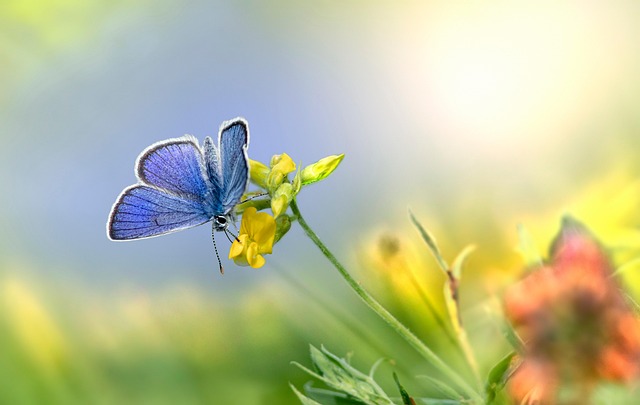Residential yellow jacket control requires understanding their behavior and habitat, which involves organized colonies with paper nests in attics, walls, or under decks. Early identification of nesting sites, regular inspections, maintaining a clean environment, and sealing access points are key to multi-faceted prevention strategies. Implementing integrated pest management (IPM) principles, including cultural practices and biological controls, promotes sustainable control while minimizing environmental impact. Regular maintenance through routine inspections and monitoring yellow jacket behavior is crucial for swift action against disturbances, ensuring a safe living environment.
Tired of dealing with persistent yellow jackets around your home? This comprehensive guide offers tailored solutions for long-term residential yellow jacket control. We delve into understanding these pests’ behavior and habitat, helping you identify potential entry points and nests. Learn effective prevention strategies to disrupt their lifecycle and maintain a safe, pest-free environment. Regular monitoring and maintenance are key; we provide essential tips for continuous protection against yellow jackets. Master these techniques for ultimate residential yellow jacket control.
Understanding Residential Yellow Jacket Behavior and Habitat
Understanding the behavior and habitat of residential yellow jackets is a crucial step in implementing effective long-term prevention strategies. These social wasps are highly organized, living in colonies with a queen who oversees the construction of paper nests, typically located in attics, walls, or under decks. During the summer months, adult workers scout for food sources, especially sweet substances like fruit juices and fermented drinks. They also recruit other yellow jackets to feed on these items, which helps sustain the colony throughout the season.
Residential yellow jacket control requires a multi-faceted approach that takes into account their natural behavior. Identifying potential nesting sites early can prevent new colonies from establishing. Homeowners should regularly inspect attics, walls, and exterior areas for any signs of nest construction or entry points. Maintaining a clean environment by promptly cleaning up fruit drops and sealing off potential access points can significantly reduce the risk of yellow jacket presence.
Identifying Entry Points and Potential Nests in Your Home
When it comes to residential yellow jacket control, understanding where these pests might be entering and nesting is key. Start by inspecting your home’s exterior thoroughly, looking for any visible signs of entry points such as gaps in siding, cracks in brickwork, or unsealed windows and doors. Yellow jackets are known to exploit these openings to build nests close to food sources. Pay special attention to areas around the roofline, eaves, and the foundation, as these locations often attract yellow jackets due to the availability of potential nesting sites and easy access to treats like insects and sweet substances.
Inside your home, check for hidden nests in attics, wall voids, or even behind paneling. Look out for telltale signs such as small holes or tunnels leading to nest entrances, and be aware that yellow jackets may have established colonies within the walls or ceiling of your residence. Identifying these potential habitats early on is crucial for effective long-term yellow jacket prevention strategies tailored specifically for residential areas.
Implementing Effective Prevention Strategies for Long-Term Control
Implementing effective prevention strategies is key to achieving long-term control over yellow jackets in both residential and commercial settings. It starts with identifying potential nest sites around your property, including voids in walls, attics, and gardens. Regular inspections by pest control professionals can help pinpoint these hidden spots and provide tailored solutions. Additionally, maintaining a clean and clutter-free environment, sealing entry points, and avoiding leaving out sweet or fermented foods reduces attractants that draw yellow jackets in.
For sustainable residential yellow jacket control, employing integrated pest management (IPM) principles is recommended. IPM integrates multiple tactics—from cultural practices like proper waste disposal to biological controls such as introducing natural predators—to minimize reliance on chemical pesticides. This holistic approach not only ensures long-term effectiveness but also promotes a safer and more environmentally friendly living space.
Regular Maintenance and Monitoring for Continuous Protection
Regular maintenance is a key component in any successful long-term strategy for residential yellow jacket control. This involves routine inspections and proactive measures to ensure your home remains unattractive to these insects. By scheduling regular checks, especially during peak seasons, you can quickly identify potential nesting sites or signs of an existing colony. It’s recommended to inspect attics, walls, and areas around windows or doors—common entry points for yellow jackets. During these inspections, look for any nests, chewed-through material, or even small holes that could indicate a presence.
Monitoring should also include keeping an eye out for any unusual behavior from the yellow jackets themselves. Observing their patterns of movement and feeding can provide valuable insights into their activity levels and potential sources of disturbance. This continuous vigilance allows for swift action if needed, ensuring that any yellow jacket activity is addressed promptly to maintain a safe and comfortable living environment.
Customized, long-term residential yellow jacket control plans are key to maintaining a safe and pest-free home environment. By understanding their behavior, identifying entry points, and implementing targeted prevention strategies, homeowners can significantly reduce the risk of yellow jacket infestations. Regular maintenance and monitoring ensure ongoing protection, allowing folks to enjoy their outdoor spaces without the hassle of these buzzing intruders. With these comprehensive steps, you can master residential yellow jacket control and create a peaceful living space.
